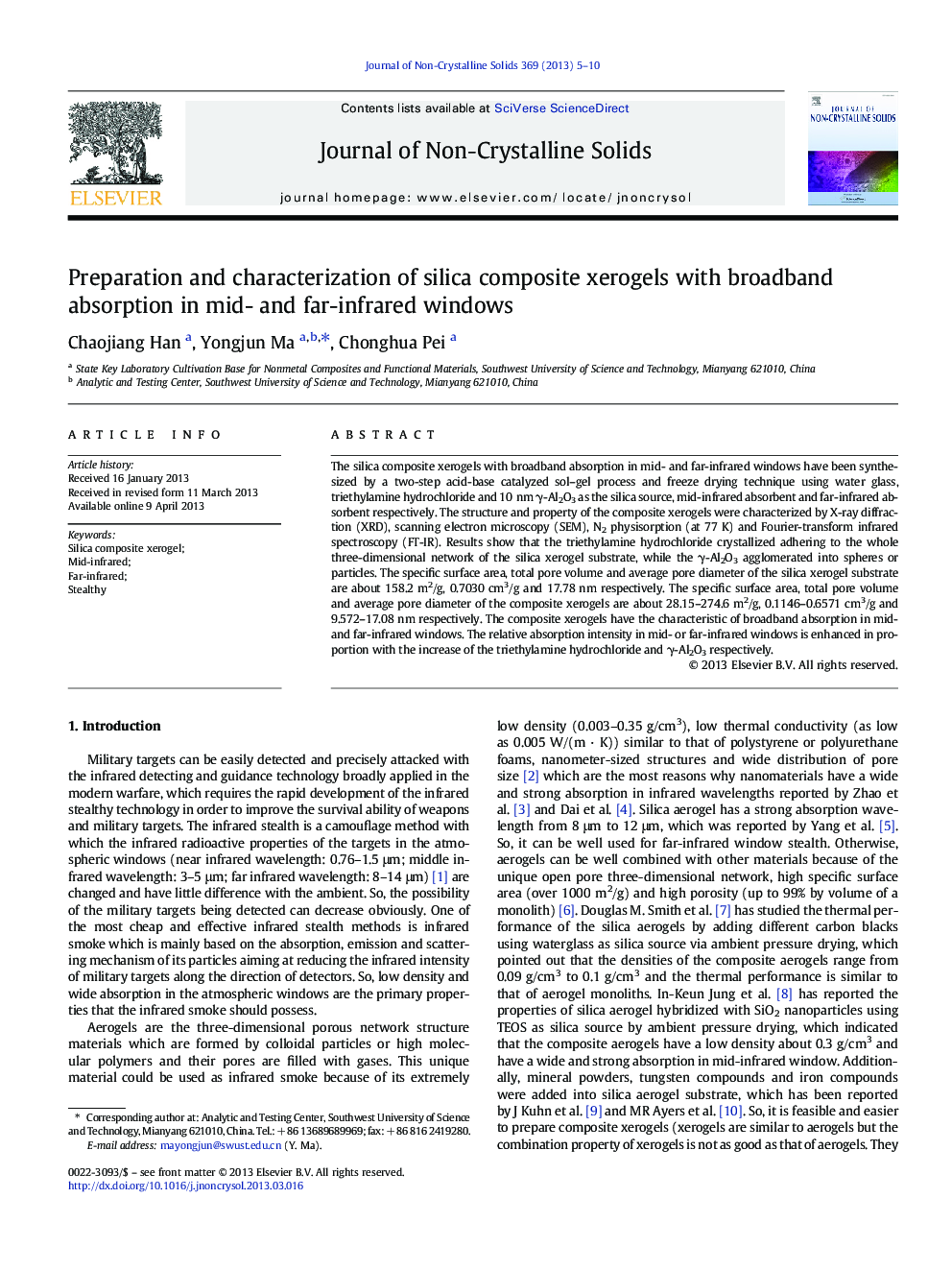| Article ID | Journal | Published Year | Pages | File Type |
|---|---|---|---|---|
| 1481372 | Journal of Non-Crystalline Solids | 2013 | 6 Pages |
•Silica xerogel substrate is synthesized using water glass as silicon source.•Triethylamine hydrochloride and γ-Al2O3 are added as infrared absorbents.•Product with broadband infrared absorption (3–5; 8–14 μm) is obtained and regulated.
The silica composite xerogels with broadband absorption in mid- and far-infrared windows have been synthesized by a two-step acid-base catalyzed sol–gel process and freeze drying technique using water glass, triethylamine hydrochloride and 10 nm γ-Al2O3 as the silica source, mid-infrared absorbent and far-infrared absorbent respectively. The structure and property of the composite xerogels were characterized by X-ray diffraction (XRD), scanning electron microscopy (SEM), N2 physisorption (at 77 K) and Fourier-transform infrared spectroscopy (FT-IR). Results show that the triethylamine hydrochloride crystallized adhering to the whole three-dimensional network of the silica xerogel substrate, while the γ-Al2O3 agglomerated into spheres or particles. The specific surface area, total pore volume and average pore diameter of the silica xerogel substrate are about 158.2 m2/g, 0.7030 cm3/g and 17.78 nm respectively. The specific surface area, total pore volume and average pore diameter of the composite xerogels are about 28.15–274.6 m2/g, 0.1146–0.6571 cm3/g and 9.572–17.08 nm respectively. The composite xerogels have the characteristic of broadband absorption in mid- and far-infrared windows. The relative absorption intensity in mid- or far-infrared windows is enhanced in proportion with the increase of the triethylamine hydrochloride and γ-Al2O3 respectively.
